Abstract
Antibodies to the major phenolic glycolipid purified from Mycobacterium leprae have been demonstrated previously in sera of leprosy but not tuberculosis patients using an ELISA. The major antigenic determinants on this molecule were investigated using antisera raised in rabbits to the purified glycolipid and with a pool of sera from human lepromatous leprosy patients. A small, but significant cross-reaction was observed with the glycolipids from M. bovis and M. kansasii, which contain the phenolphthiocerol dimycocerosate part of the molecule but have different sugars, and also with a semi-synthetic 'attenuation indicator lipid' which shares the phenolphthiocerol but has no sugars. There was however no cross-reaction with phthiocerol dimycocerosate. The disaccharide, corresponding to the two terminal sugars of the M. leprae glycolipid has been chemically synthesized and shown to inhibit the reaction between glycolipid and antibody in the ELISA. The cross-reactivity observed with the M. bovis and M. kansasii glycolipids was not inhibited by the synthetic disaccharide. These findings suggest that the cross-reactivity is associated with the phenol ring and implies the disaccharide may be a unique antigenic determinant of M. leprae.
Full text
PDF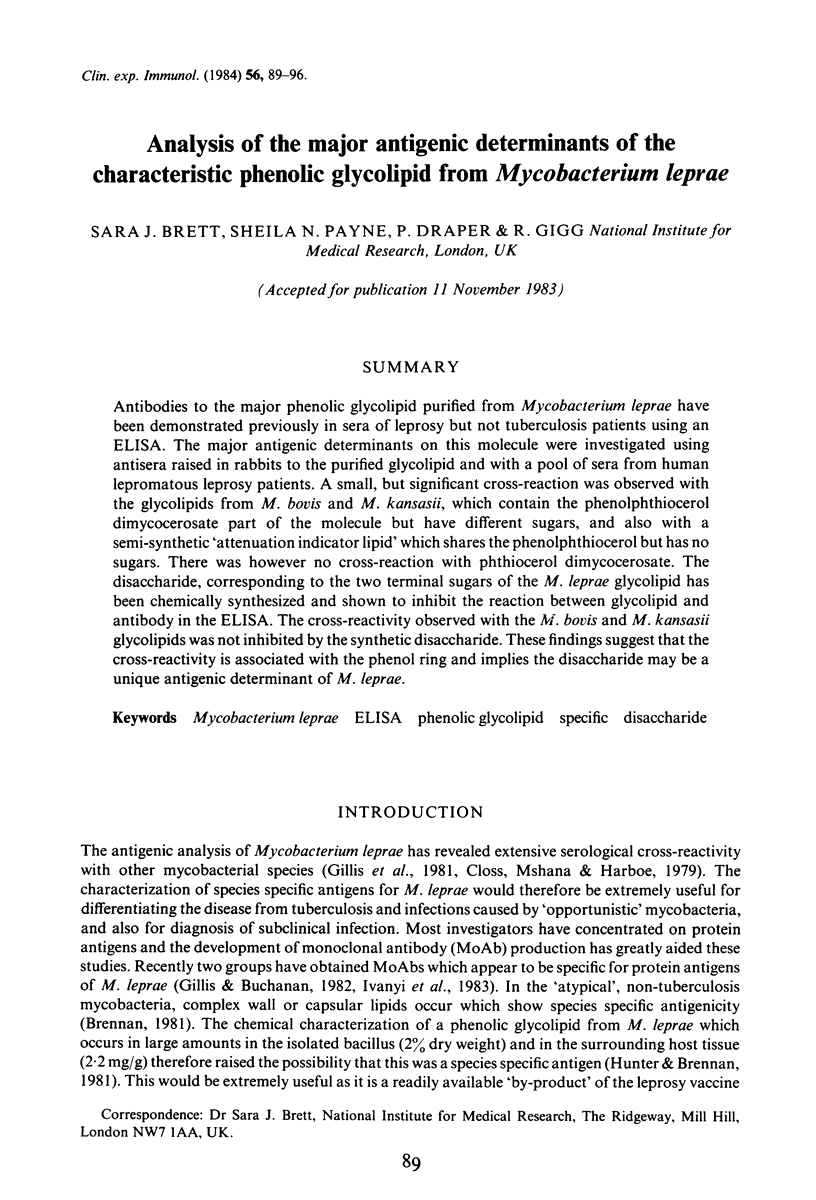
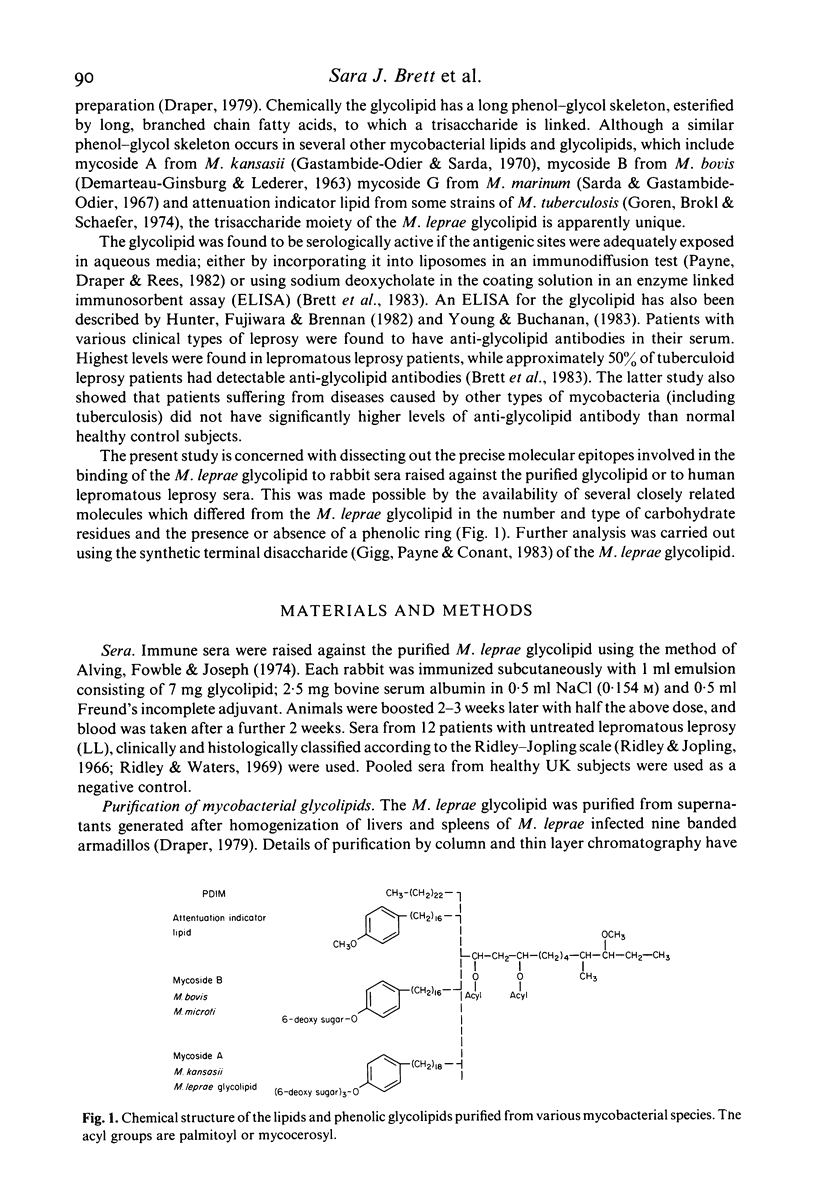
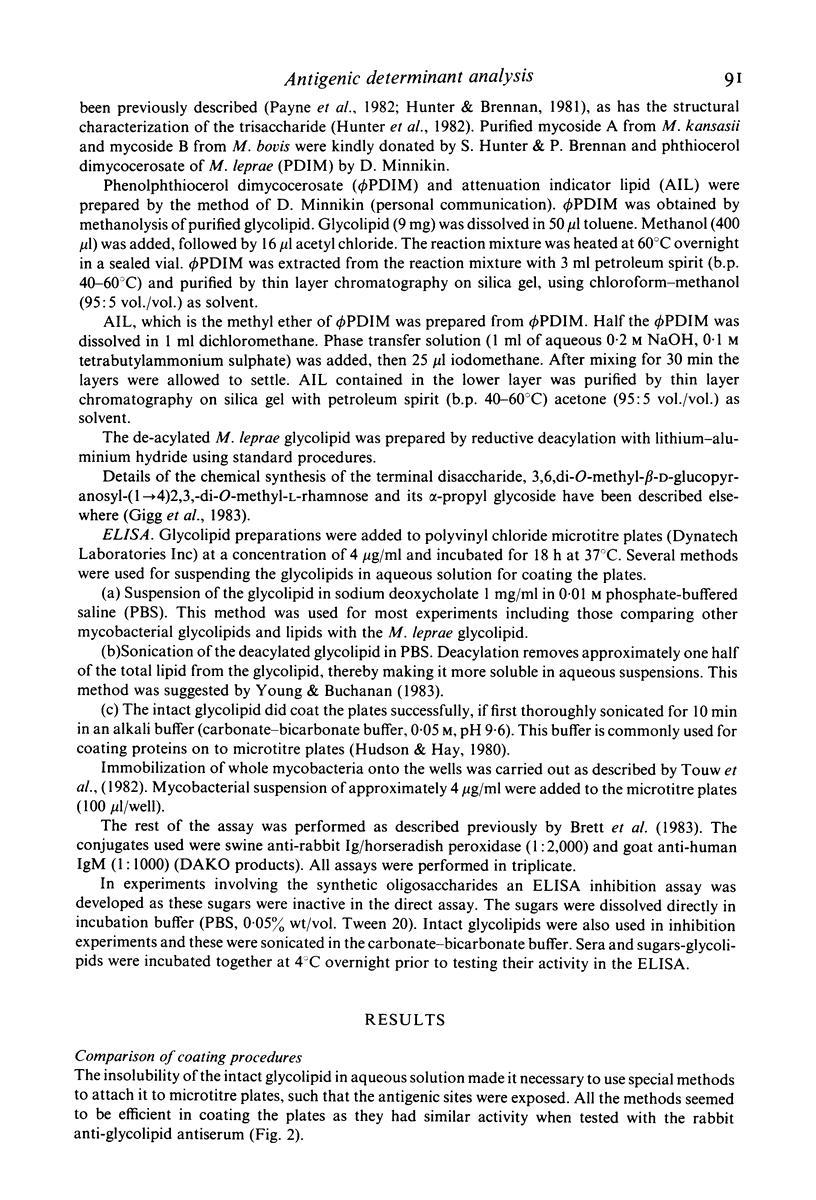

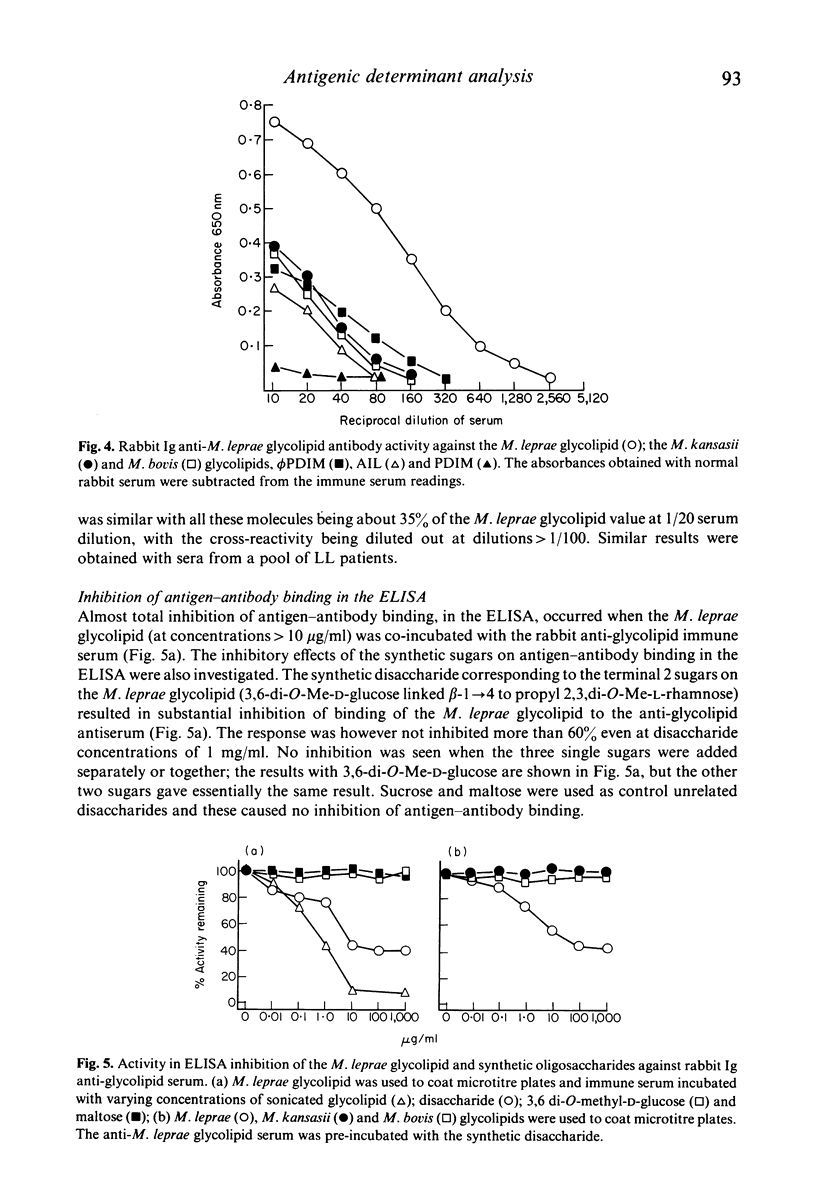
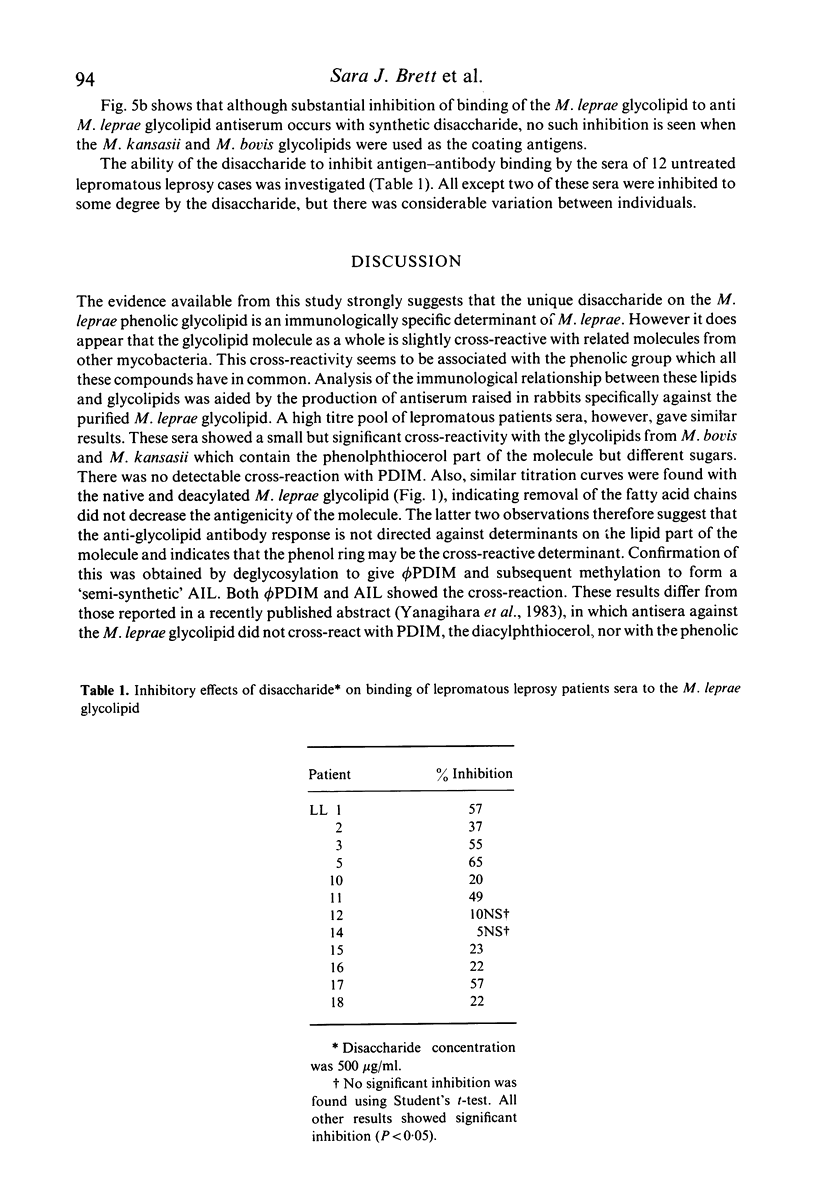
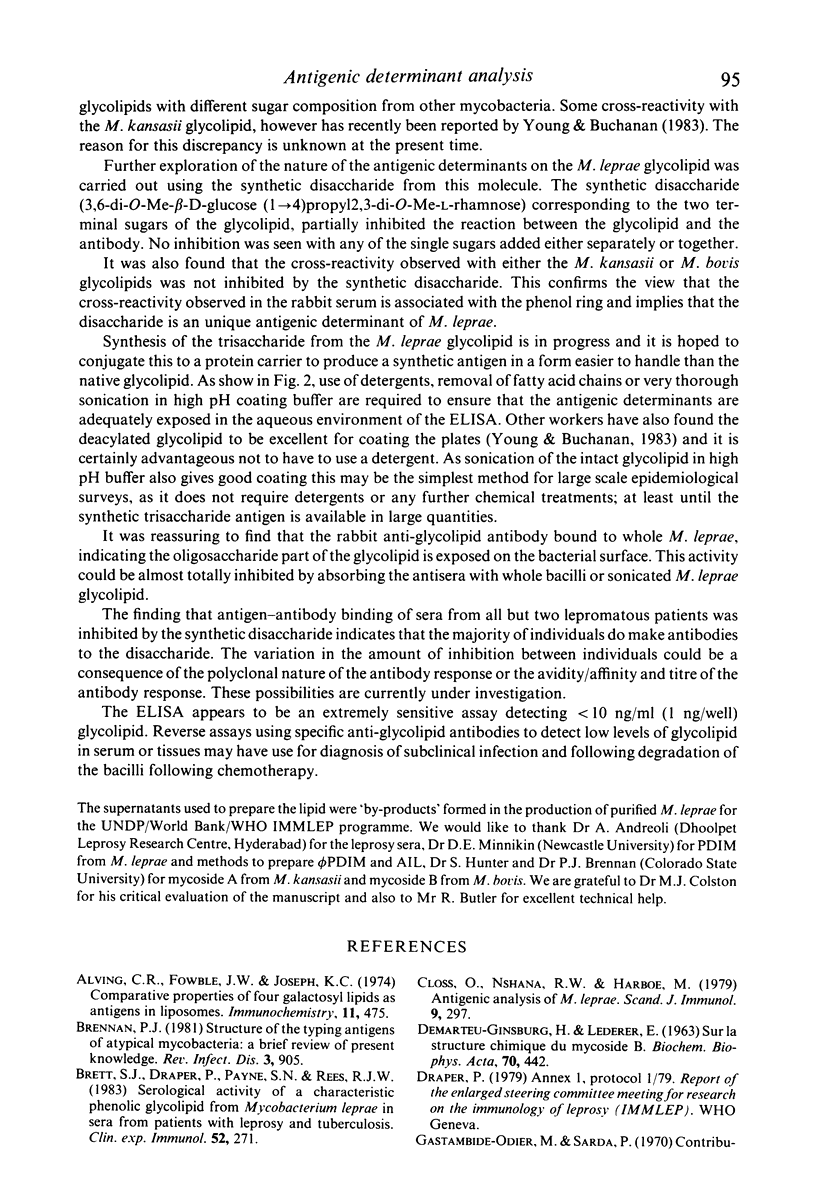
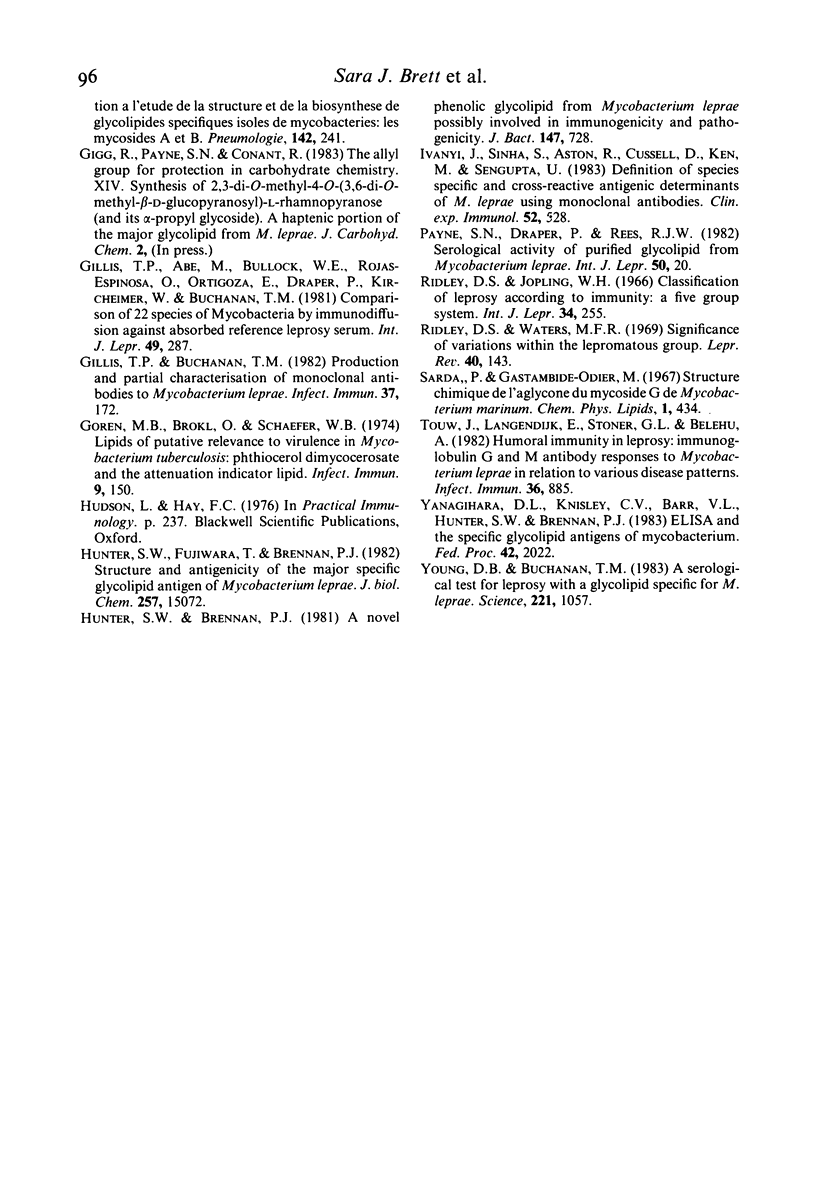
Selected References
These references are in PubMed. This may not be the complete list of references from this article.
- Alving C. R., Fowble J. W., Joseph K. C. Comparative properties of four galactosyl lipids as antigens in liposomes. Immunochemistry. 1974 Aug;11(8):475–481. doi: 10.1016/0019-2791(74)90118-9. [DOI] [PubMed] [Google Scholar]
- Brennan P. J. Structures of the typing antigens of atypical mycobacteria: a brief review of present knowledge. Rev Infect Dis. 1981 Sep-Oct;3(5):905–913. doi: 10.1093/clinids/3.5.905. [DOI] [PubMed] [Google Scholar]
- Brett S. J., Draper P., Payne S. N., Rees R. J. Serological activity of a characteristic phenolic glycolipid from Mycobacterium leprae in sera from patients with leprosy and tuberculosis. Clin Exp Immunol. 1983 May;52(2):271–279. [PMC free article] [PubMed] [Google Scholar]
- Closs O., Mshana R. N., Harboe M. Antigenic analysis of Mycobacterium leprae. Scand J Immunol. 1979 Mar;9(3):297–302. doi: 10.1111/j.1365-3083.1979.tb02735.x. [DOI] [PubMed] [Google Scholar]
- DEMARTEAU-GINSBURG H., LEDERER E. SUR LA STRUCTURE CHIMIQUE DU MYCOSIDE B. Biochim Biophys Acta. 1963 Aug 27;70:442–451. doi: 10.1016/0006-3002(63)90774-1. [DOI] [PubMed] [Google Scholar]
- Gastambide-Odier M., Sarda P. Contribution à l'étude de la structure et de la biosynthèse de glycolipides spécifiques isolés de mycobactéries: les mycosides a et b. Pneumonologie. 1970;142(2):241–255. doi: 10.1007/BF02095222. [DOI] [PubMed] [Google Scholar]
- Gillis T. P., Buchanan T. M. Production and partial characterization of monoclonal antibodies to Mycobacterium leprae. Infect Immun. 1982 Jul;37(1):172–178. doi: 10.1128/iai.37.1.172-178.1982. [DOI] [PMC free article] [PubMed] [Google Scholar]
- Goren M. B., Brokl O., Schaefer W. B. Lipids of putative relevance to virulence in Mycobacterium tuberculosis: phthiocerol dimycocerosate and the attenuation indicator lipid. Infect Immun. 1974 Jan;9(1):150–158. doi: 10.1128/iai.9.1.150-158.1974. [DOI] [PMC free article] [PubMed] [Google Scholar]
- Hunter S. W., Brennan P. J. A novel phenolic glycolipid from Mycobacterium leprae possibly involved in immunogenicity and pathogenicity. J Bacteriol. 1981 Sep;147(3):728–735. doi: 10.1128/jb.147.3.728-735.1981. [DOI] [PMC free article] [PubMed] [Google Scholar]
- Hunter S. W., Fujiwara T., Brennan P. J. Structure and antigenicity of the major specific glycolipid antigen of Mycobacterium leprae. J Biol Chem. 1982 Dec 25;257(24):15072–15078. [PubMed] [Google Scholar]
- Ivanyi J., Sinha S., Aston R., Cussell D., Keen M., Sengupta U. Definition of species specific and cross-reactive antigenic determinants of Mycobacterium leprae using monoclonal antibodies. Clin Exp Immunol. 1983 Jun;52(3):528–536. [PMC free article] [PubMed] [Google Scholar]
- Ridley D. S., Jopling W. H. Classification of leprosy according to immunity. A five-group system. Int J Lepr Other Mycobact Dis. 1966 Jul-Sep;34(3):255–273. [PubMed] [Google Scholar]
- Ridley D. S., Waters M. F. Significance of variations within the lepromatous group. Lepr Rev. 1969 Jul;40(3):143–152. doi: 10.5935/0305-7518.19690026. [DOI] [PubMed] [Google Scholar]
- Touw J., Langendijk E. M., Stoner G. L., Belehu A. Humoral immunity in leprosy: immunoglobulin G and M antibody responses to Mycobacterium leprae in relation to various disease patterns. Infect Immun. 1982 Jun;36(3):885–892. doi: 10.1128/iai.36.3.885-892.1982. [DOI] [PMC free article] [PubMed] [Google Scholar]
- Young D. B., Buchanan T. M. A serological test for leprosy with a glycolipid specific for Mycobacterium leprae. Science. 1983 Sep 9;221(4615):1057–1059. doi: 10.1126/science.6348948. [DOI] [PubMed] [Google Scholar]


